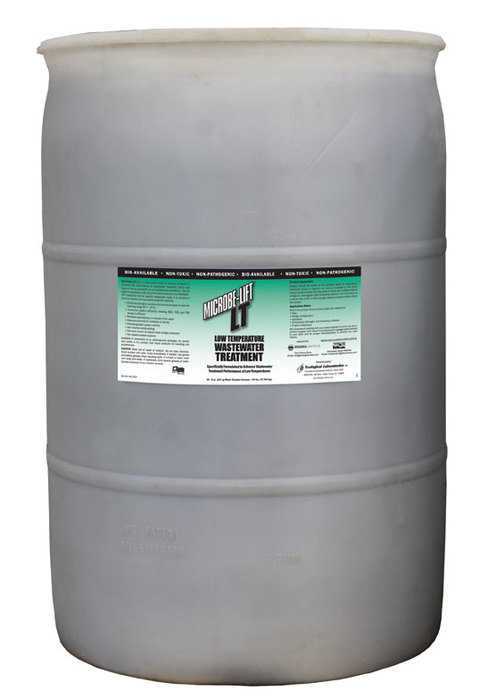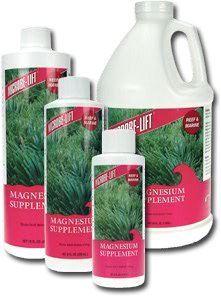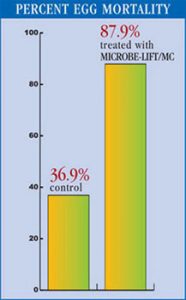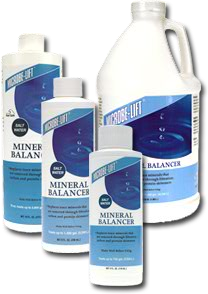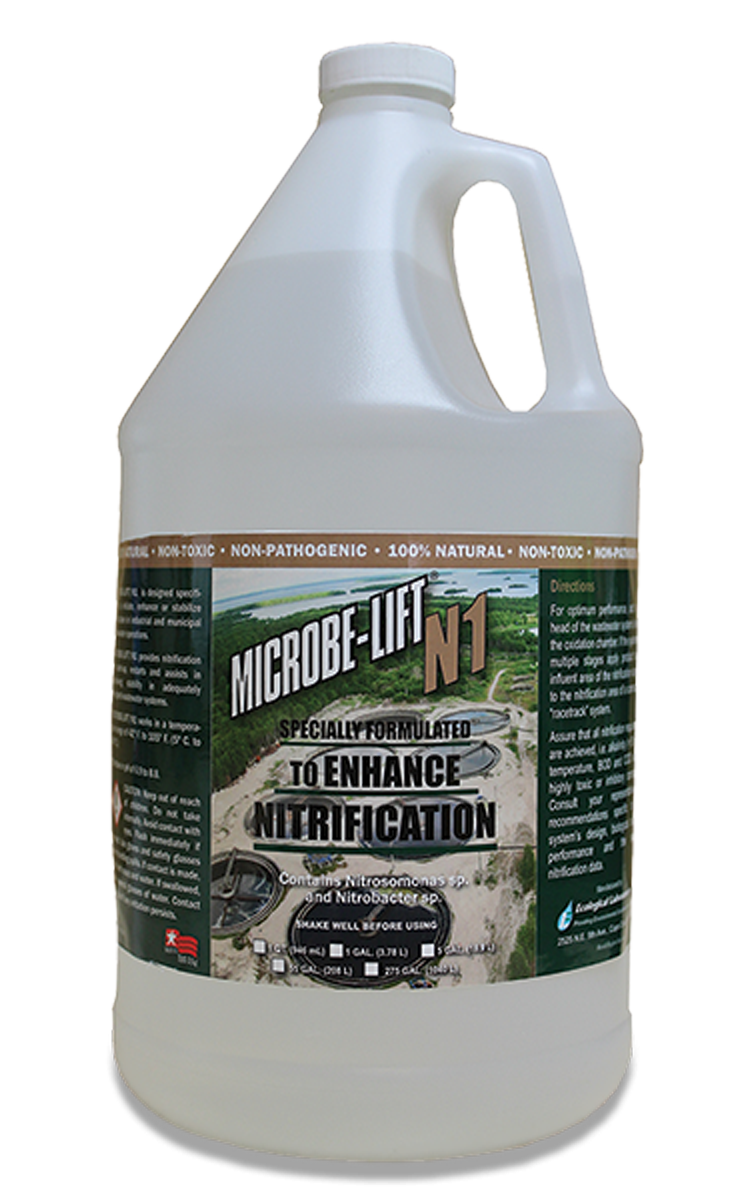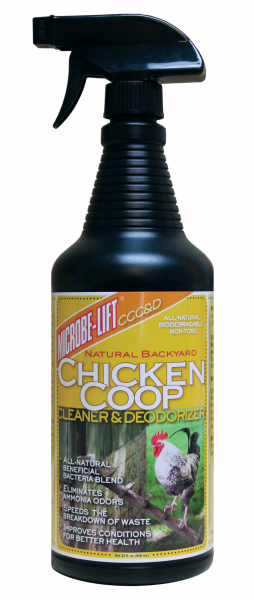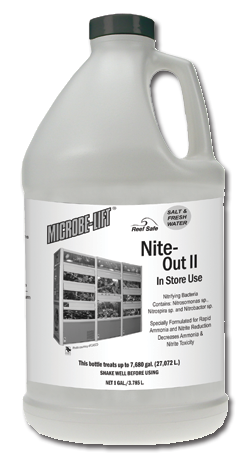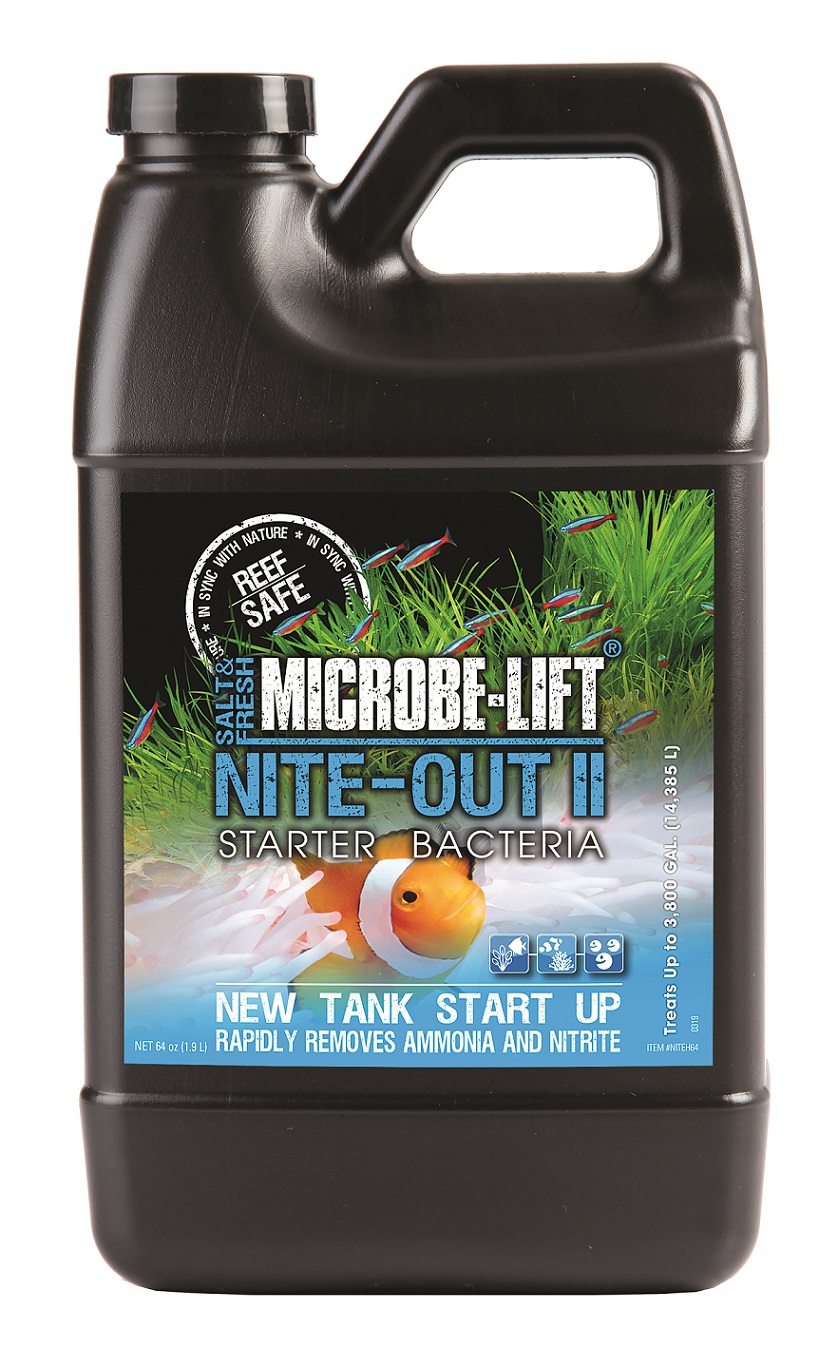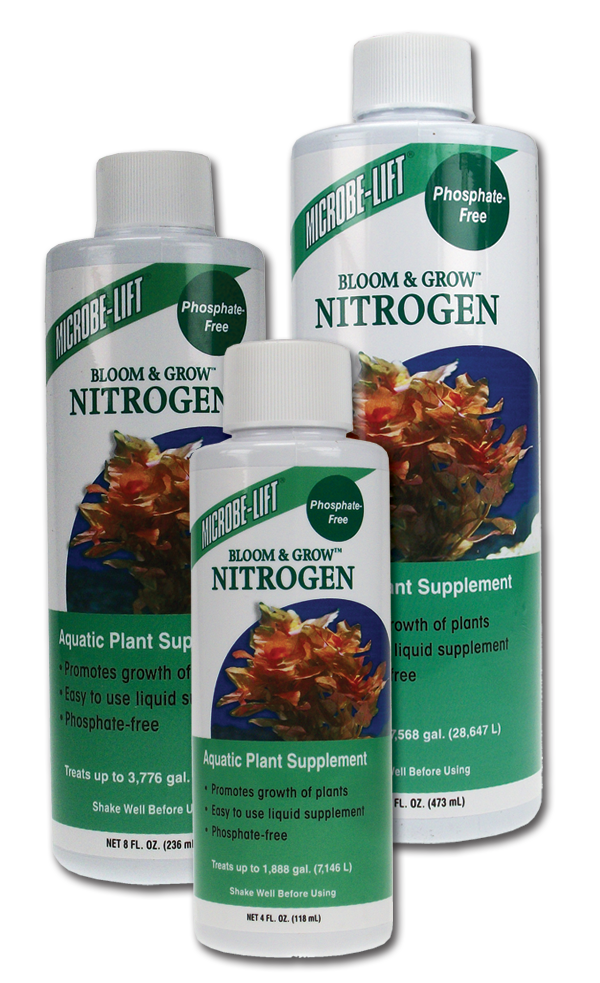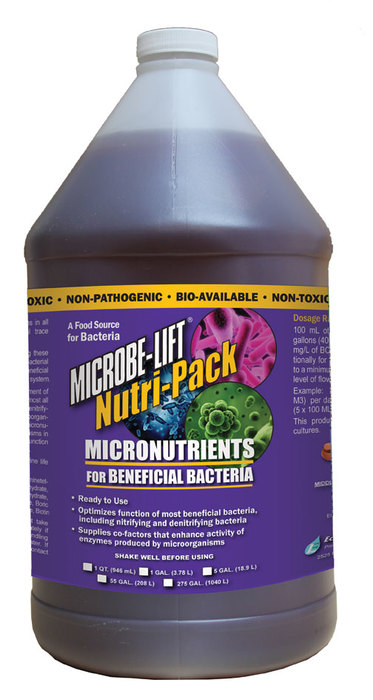-
Free Shipping for Orders over $50
$10 Flat Fee Shipping for Orders Under $50
DOWNLOAD SDS
Designed to raise the level of magnesium safely in a marine system and will not upset the ionic balance.
This concentrated supplement contains over 72,000 ppm of cationic magnesium. It is nitrate, phosphate and gluconate free. Magnesium has an important role in keeping concentrations of calcium in the marine system. If the concentrations of magnesium drops it will be very difficult to increase the concentrations of calcium. Due to the rapid bonding of calcium and carbonates in the marine system, this is usually manifested by what is referred to as a snow storm (precipitate) upon addition of calcium or alkaline buffer. The concentration of magnesium should be maintained at 1,320 mg/L. (1,320 ppm) natural seawater concentration. MICROBE-LIFT/Magnesium Supplement is a bio-available natural component. MICROBE-LIFT/Magnesium Supplement does not require any pre-dissolving and is an essential element for hard and soft corals, which is normally depleted by filtration and coral absorption. Magnesium Supplement is ionically balanced for reef and marine aquaria. It is not necessary to use more magnesium supplement than recommended to increase and maintain the concentration level.Available Sizes
- 4 fl. oz. (118 mL.) (MAG04)
- 8 fl. oz. (236 mL.) (MAG08)
- 16 fl. oz. (473 mL.) (MAG16)
- 1 gal. (3.785 L.) (MAGG1)
Cautions
- Keep out of the reach of children
- Follow directions carefully
- May cause eye or skin irritation
- If in eyes, flush with water for 15 minutes and get medical attention
-
DOWNLOAD SDS
For Maximum Pond Clarity Plus Enzymes, Barley Straw, Humates & Peat
This proprietary formulation of dry bacteria has a big PLUS - four additional natural ingredients! The humates provide humic acid which have a natural ability to sequester (tie up) inorganic compounds. Therefore, their concentrations in the pond don't reach levels that would imbalance the pond's ecosystem. The peat helps to buffer the pH of the pond water.Available Sizes
- 6 oz. (MLMCX6) Treats small ponds: 80-250 gallons for 21 weeks.
- 12 oz. (MLMCX12) Treats medium ponds: 250-750 gallons for 12 weeks.
- 3 lbs. (MLMCX3) Treats large ponds: 750-2,000 gallons for 32 weeks.
- 5 lbs. (MLMCX5) Treats extre large ponds: 2,000-5,000 gallons for 20 weeks.
-
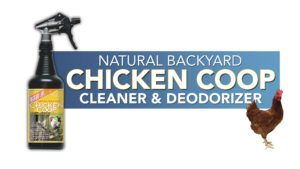
Chicken manure is very high in nitrogen content, a factor which leads to the emission of high concentrations of ammonia. As a result, toxic concentrations of ammonia can build up in coops. MICROBE-LIFT/CCC&D helps to remove the generation of ammonia from waste, improving bird health & reducing maintenance.
MICROBE-LIFT/CCC&D incorporates the action of stable, highly-active microbial cultures specifically selected for rapid uptake of ammonia ions with nontoxic ingredients that capture typical odors associated with chicken waste & litter.
DOWNLOAD SDS DOWNLOAD .pdfSpecific Benefits
- Eliminates ammonia odors from chicken manure
- Improves conditions for better health
- Accelerates breakdown of litter & waste
- Increases nutrient value of litter for compost
- Effective on all types of chicken waste
- Convenient to apply by simply spraying directly on all surfaces & litter
- Utilizes natural microbes & proprietary odor neutralizers to maintain a cleaner, healthier environment in coops & yards
- Safe for users, poultry & the environment
- Product is readily biodegradable

Sizes
- Gal (3.785 L) Jug w/Pump
- 32 oz. (946 mL) Spray Bottles
-
Free Shipping for Orders over $50
$10 Flat Fee Shipping for Orders Under $50
DOWNLOAD SDS

Nitrifying Bacteria
Contains: Nitrosomonas, Nitrospira and Nitrobactor Specially Formulated for Rapid Ammonia and Nitrite Reduction Decreases Ammonia & Nitrite Toxicity Treats up to 7,680 gal. (27,072 L.) MICROBE-LIFT/Nite-Out II is designed specifically for aquarium waters that contain marine life. Its highly-specialized microbial consortium of nitrifying cultures are specially formulated to eliminate ammonia via a natural biological process termed nitrification. The cultures contain in MICROBE-LIFT/Nite-Out II will establish, promote or stabilize and maintain nitrification in aquarium waters, eliminating the toxic effect of ammonia. MICROBE-LIFT/Nite-Out II liquid nitrifying bacteria contains select strains of Nitrosomonas, Nitrospira and Nitrobacter. Nitrosomonas oxidize ammonia to nitrite and Nitrobacter and Nitrospira oxidize nitrite to nitrate.Nitrification
MICROBE-LIFT/Nite-Out II comprises select microorganisms that are autotrophic – able to use carbon dioxide as the sole source of carbon – and are relatively slow growing, requiring specific conditions for optimum growth with typical cell divisions rates from 8 to 16 hours. Their performance and rate growth is impacted by the environmental parameters required for nitrification.Nitrosomonas Nitrobacter NH3 => NO2 => NO3 Ammonia Nitrite Nitrate Cautions
- Keep out of reach of children
- Wash hands after use
- If eye irritation occurs, flush with water for 15 minutes
- Do not take internally
-
Free Shipping for Orders over $50
$10 Flat Fee Shipping for Orders Under $50
DOWNLOAD SDS
Decreases Ammonia & Nitrite Toxicity For SALT & FRESH WATER Contains: Nitrosomonas and Nitrobacter MICROBE-LIFT/Nite-Out II is designed specifically for aquarium waters that contain marine life. Its highly-specialized microbial consortium of nitrifying cultures are specially formulated to eliminate ammonia via a natural biological process termed nitrification. The cultures contain in MICROBE-LIFT/Nite-Out II will establish, promote or stabilize and maintain nitrification in aquarium waters, eliminating the toxic effect of ammonia. MICROBE-LIFT/Nite-Out II liquid nitrifying bacteria contains select strains of Nitrosomonas and Nitrobacter. Nitrosomonas oxidize ammonia to nitrite and Nitrobacter oxidize nitrite to nitrate. MICROBE-LIFT/Nite-Out II comprises select microorganisms that are autotrophic - able to use carbon dioxide as the sole source of carbon - and are relatively slow growing, requiring specific conditions for optimum growth with typical cell divisions rates from 8 to 16 hours. Their performance and rate growth is impacted by the environmental parameters required for nitrification. Specially Formulated for Rapid Ammonia and Nitrite Reduction
Specially Formulated for Rapid Ammonia and Nitrite ReductionAvailable Sizes
- 4 fl. oz. (118 mL.) (NITEH04) Treats up to 236 gal. (893 L.)
- 8 fl. oz. (236 mL.) (NITEH08) Treats up to 480 gal. (1,814 L.)
- 16 fl. oz. (473 mL.) (NITEH16) Treats up to 950 gal. (3,596 L.)
- 64 fl. oz. (1.893 mL.) (NITEH64)
- 1 gal. (3.785 L.) (NITEHG1) Treats up to 7,600 gal. (28,769 L.)
Cautions
- Keep out of reach of children
- Wash hands after use
- If eye irritation occurs, flush with water for 15 minutes
- Do not take internally
-
DOWNLOAD SDS
Specially Formulated For Rapid Ammonia & Nitrite Reduction
MICROBE-LIFT/Nite-Out II is designed specifically for pond waters that contain marine life. Its highly-specialized microbial consortium of nitrifying cultures are specially formulated to eliminate ammonia via a natural biological process termed nitrification. The cultures contained in MICROBE-LIFT/Nite-Out II will establish, promote or stabilize and maintain nitrification in pond waters, eliminating the toxic effect of ammonia. MICROBE-LIFT/Nite-Out II liquid nitrifying bacteria contains select strains of Nitrosomonas and Nitrobacter. Nitrosomonas convert ammonia to nitrite and Nitrobacter convert nitrite to nitrate. MICROBE-LIFT/Nite-Out II comprises select microorganisms that are autotrophic-able to use carbon dioxide as the sole source of carbon-and are relatively slow growing, requiring specific conditions for optimum growth with typical cell division rates from 8 to 16 hours. Their performance and rate of growth are impacted by the environmental parameters required for nitrification. They are also highly oxygen-sensitive, requiring high dissolved oxygen levels (greater than 2 mg/L) to achieve maximum growth rates. Nitrite is produced by beneficial bacteria in the pond and the oxidation of harmful waste ammonia excreted by fish. Even though nitrite is not as toxic as ammonia, it is still very damaging to the health of fish.- Initiates nitrification
- Promotes stable nitrification
- Provides stable cold weather nitrification
- Safe for use around plants and animals
Available Sizes
- 16 oz. (NITE16) Treats a 500 gal. pond for 14 months.
- 32 oz. (NITE32) Treats a 2,500 gal. pond for 5 months.
- 1 gallon (NITEGAL) Treats a 5,000 gal. pond for 11 months.
-
DOWNLOAD SDS Aquatic Plant Supplement Phosphate Free
Free Shipping for Orders over $50
$10 Flat Fee Shipping for Orders Under $50
- Promotes growth of plants
- Easy to use liquid supplement
- Phosphate-free
Available Sizes
- 4 fl. oz. Treats up to 1,888 gal. (7,146 L)
- 8 fl. oz. Treats up to 3,776 gal. (14,293 L)
- 16 fl. oz. Treats up to 7,568 gal. (28,647 L)
Cautions
- Keep out of the reach of children.
- Follow directions carefully.

